Making Peace with Food
- May 11, 2020
- Last Updated: March 20, 2024
- 1 Comment
- Intuitive Eating
The third principle of intuitive eating is all about making peace with food and exactly how to make peace with food.
If you’re new here, this is a 10-week series where we are focusing on the 10 principles of intuitive eating. Specifically, how they apply to athletes.
If you’re interested in a FREE hunger scale download for athletes, click here.
As an Amazon Associate, I may earn from qualifying purchases. You can read more here on our Disclaimer and Privacy Page.
The first post was about how to reject the diet mentality for athletes.
Post 2 was all about how to honor your hunger cues, with specific detail on eating after workouts when you don’t have an appetite.
This is so important, especially because many runners are undereating and not getting enough energy.
That’s a big reason why I created the Runner’s Guide to Intuitive Eating, to help ensure adequate fueling.
A SPORTS DIETITIAN IN YOUR POCKET?!
This is the sports nutrition resource you’ve been missing in your training. It can help make sure you’re eating enough for performance and recovery. – grab it now!
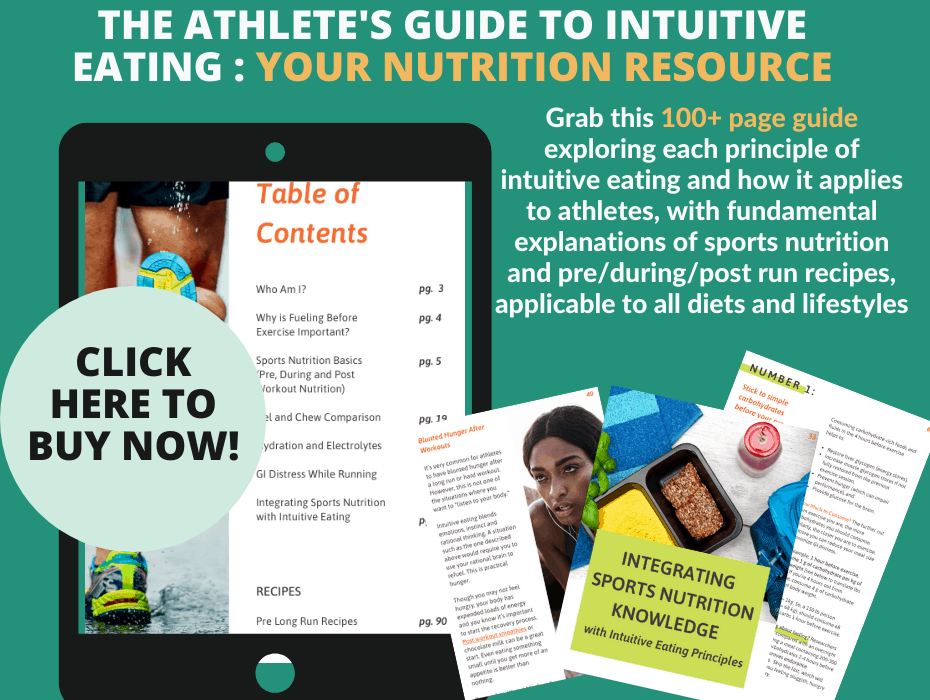
How to Make Peace with Food
These principles are not ordered by importance and they don’t have to be followed in order.
When I’m working with clients, I’m often working on several at once.
Part of making peace with food is not labeling foods as “good” or “bad,” and not telling yourself that you can’t have certain foods.
Doing so can lead to feelings of deprivation and even cravings.
To make peace with food, you need to be in touch with your hunger and fullness signals and be working towards food freedom.

And guess what happens when you finally do eat that food (because you can’t stop thinking about it)?
Firstly, you probably eat more than you planned on because your brain is extra excited when it tastes this food that it has been focusing on for so long.
Next, you feel guilty, and the endless circle starts again.
A new food rule is put up, foods are “forbidden” again, and intense cravings happen, usually again leading to the Last Supper mentality.
As Resch and Tribole state in the book, “The process of giving yourself permission to eat is the stepping stone to rebuilding your trust with food and yourself.”
How The Deprivation Mindset Affects Us
Psychologist Fritz Heider states that depriving yourself of something you want can actually heighten your desire for that very item.
As we talked about in the first principle about diet mentality with the Ancel Keys experiment, deprivation is powerful both biologically and psychologically.
It controls our mind so that we hyperfocus on what we’re deprived of, but it sets off a STRONG biological drive to eat that is beyond our control.
If you tell yourself you can’t have pizza, pizza is probably all you’ll find yourself thinking about.
That is a symptom of an unhealthy relationship with food.

This leads us to the backlash we experience with deprivation, called rebound eating.
What is Rebound Eating?
The idea behind rebound eating when thinking about intuitive eating is that a food rule(s) often trigger a binge or overeating episode.
If you tell yourself you’re never going to eat “x” food again (a very impractical statement), when you do have that food, you’re likely to consume large amounts of it thinking this will really be the last time you let yourself eat it.
Which then leads to more restriction. Imagine a pendulum swinging back and forth to extremes and never settling in the middle.
I think what’s particularly interesting is that even the thought of banning a food can trigger overeating. That’s how smart our bodies are!
Just thinking about going on a diet can create panic and send you on a trail of enjoying all the foods you like that you anticipate cutting out.

We often like to talk about this as a pendulum or seesaw because deprivation and guilt work in opposite manners.
When talking about intuitive eating for teens, this analogy is super helpful.
When deprivation is low (ie – you’re “not following your diet,” because you don’t feel deprived), guilt is usually high because you’re not following your diet.
On the flipside, when deprivation is high (and restriction is high), guilt is usually low because you are following the “rules” and not eating any “bad” foods.
Once you do eat a so-called “bad” food, the seesaw switches entirely and guilt is high and triggers a rebellious, “what the hell” affect.
Either side is an extreme form of eating and not what normal eating is supposed to look like.
It can also make it really confusing to tune in to what you actually want to eat. You probably feel like, “I don’t know what I want to eat!”
The More Deprived Dieting Makes You, The Greater the Deprivation Backlash
Mere thoughts of “not getting enough” or foods you want affect you significantly.
An interesting study about this was done in dieters to examine how they perceive calories. All subjects were given chocolate pudding snacks, however, the pudding differed in the amount of calories.
One group received high calorie pudding while the other received low calorie pudding.

Within each of these groups, half of the subjects were told that their pudding was high in calories, and half were told their pudding was low in calories.
The dieters who thought the pudding was high in calories ate more than the dieters who thought theirs was low in calories…by 61%!
Why do you think this is?
The mere perception of calories and restriction can affect our eating behavior.
Those consuming the high calorie pudding thought that this was the “only” time they’d be allowed to do so, so they ate more. They were also likely experiencing some rebellion and defiance, which often comes up with dieting.
Making Peace with Food Means Giving Yourself Permission
- Make a list of foods that you actually enjoy and that are appealing to you
- After making that list, differentiate between what you currently eat and what you won’t allow yourself to eat. Maybe circle the foods that are “off limits.”
- Start by giving yourself permission to eat one of the foods on your list. If you won’t allow it in the house, buy it. If that thought is too overwhelming right now, maybe you can pick it up from somewhere or order it at a restaurant.
- When you do have an experience with that food, check in with yourself. Do you actually enjoy it? Is it as good as you remember? Does it still taste as good after a few bites? This resource has several questions you can ask yourself to “check in” with your hunger, fullness and satisfaction.
- Lastly, keep that food in your kitchen (in adequate quantities) so you don’t trigger the deprivation mindset. If that is too scary right now, allow yourself to order it as often as you’d like.
You would then repeat these steps with another food on your list.
How Can Athletes Trust Hunger and Make Peace with Food
It should be apparent how some of these thoughts and tendencies can be problematic to athletes and sport, considering all of the additional energy these individuals need.

Last week in episode 2, we discussed how athletes can learn to honor their hunger.
This is particularly relevant after hard workouts or snacking throughout the day to provide adequate energy, even without hunger cues.
However, how can athletes handle the food rules and making peace with food? These ideas can help.

1. Consider strategic food choices that may include something your body really wants and craves, paired with a nutritional sidekick.
For example, if you really want a chocolate bar for a snack, can you pair it with an antioxidant-rich piece of fruit that will provide carbohydrates for energy before your workout later?
2. Don’t base your food choices off of exercise and your workouts.
I know this goes against what we’re told but allow yourself to eat more on a rest day if you need to. Really tune in to those hunger cues, but also use emotion and rational thinking when making food choices.
3. Reframe negative thoughts and thought patterns.
Thoughts such as, “I shouldn’t….” or “I won’t let myself eat…” or “Sugar is bad,” can all be reframed into helpful affirmations or beliefs about adequately providing energy for sport.
For example, “I shouldn’t eat ice cream tonight since I’ve had it the last few nights,” can be reframed to, “Ice cream sounds really good tonight. If I don’t feel great in my workout tomorrow, maybe I’ll think about that in the future, but tonight I’m going to enjoy this ice cream and know the extra carbohydrates can help fuel my muscles.”
4. Include Foods You Enjoy Regularly
Challenge the inner diet culture mindset and include foods you enjoy regularly to prevent any deprivation mindset. Doing so can help build trust in yourself and your body

Tune in next week as we learn to challenge the food police!
What are your struggles with making peace with food?
Sources:
- Tribole, E. and Resch, E. (2012). Intuitive eating, 3rd edition. New York, NY: St. Martin’s Griffin.
- Ogden, J. and Wardle, J. (1991), Cognitive and emotional responses to food. Int. J. Eat. Disord., 10: 297-311. doi:10.1002/1098-108X(199105)10:3<297::AID-EAT2260100306>3.0.CO;2-D
Support Bucket List Tummy








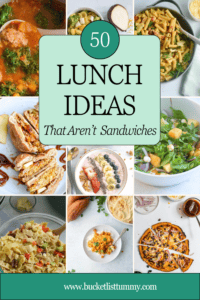


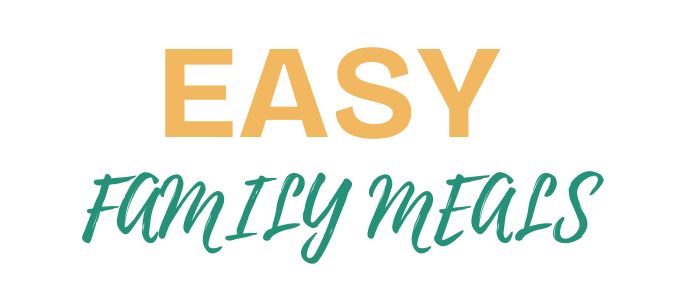
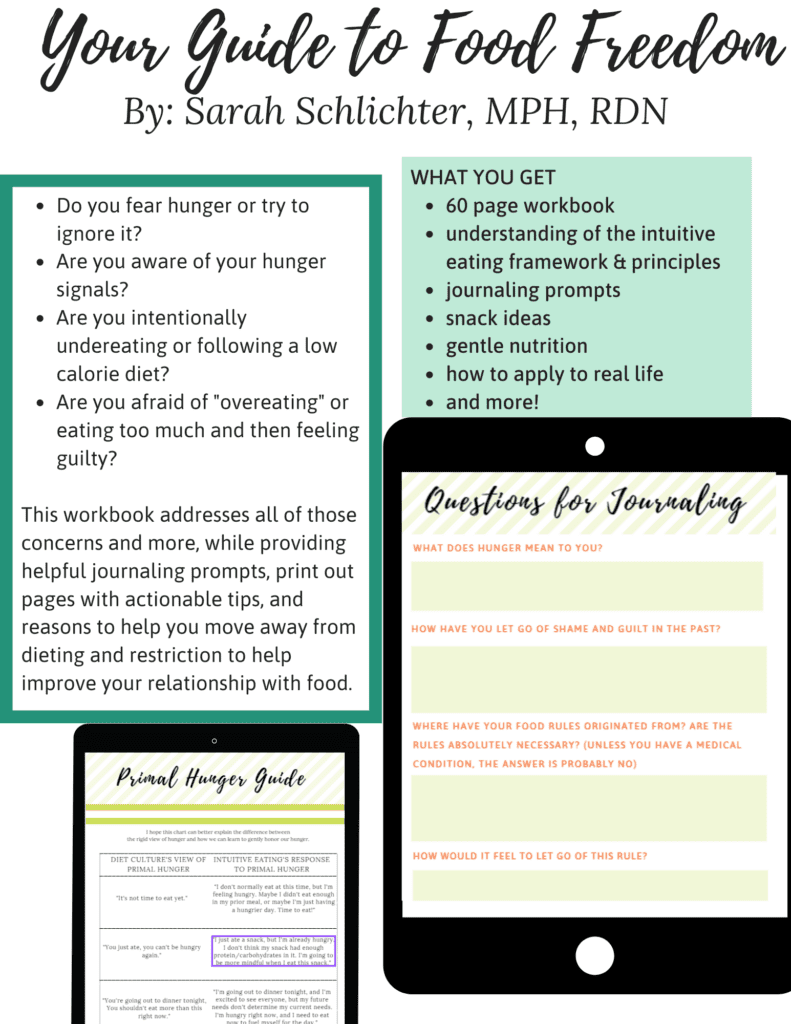
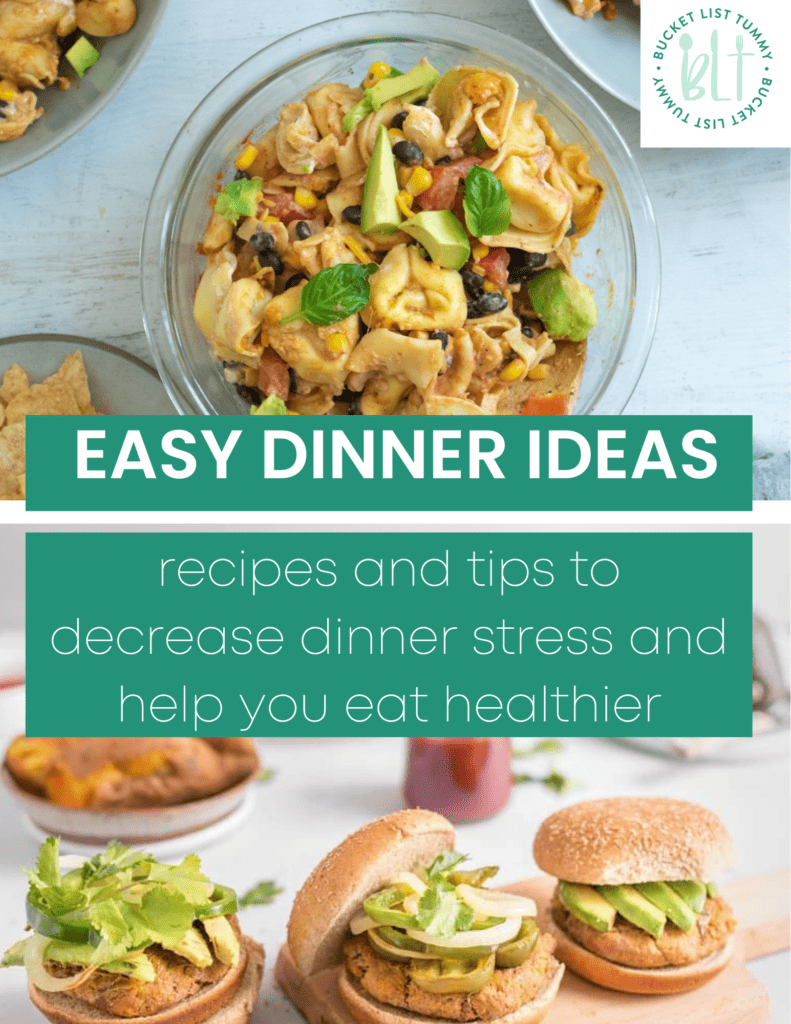
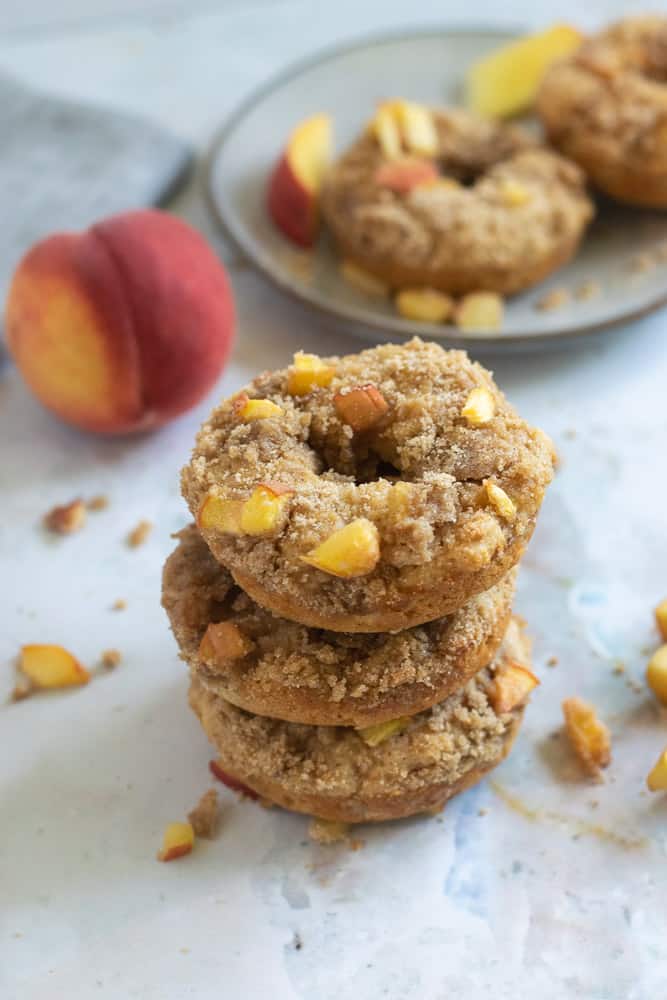
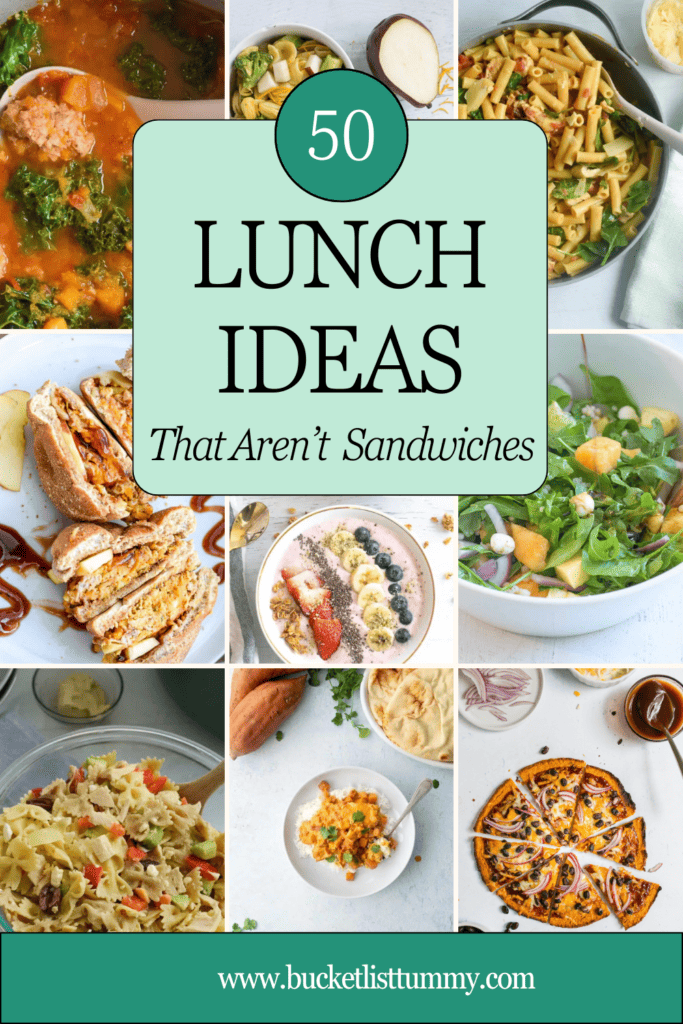
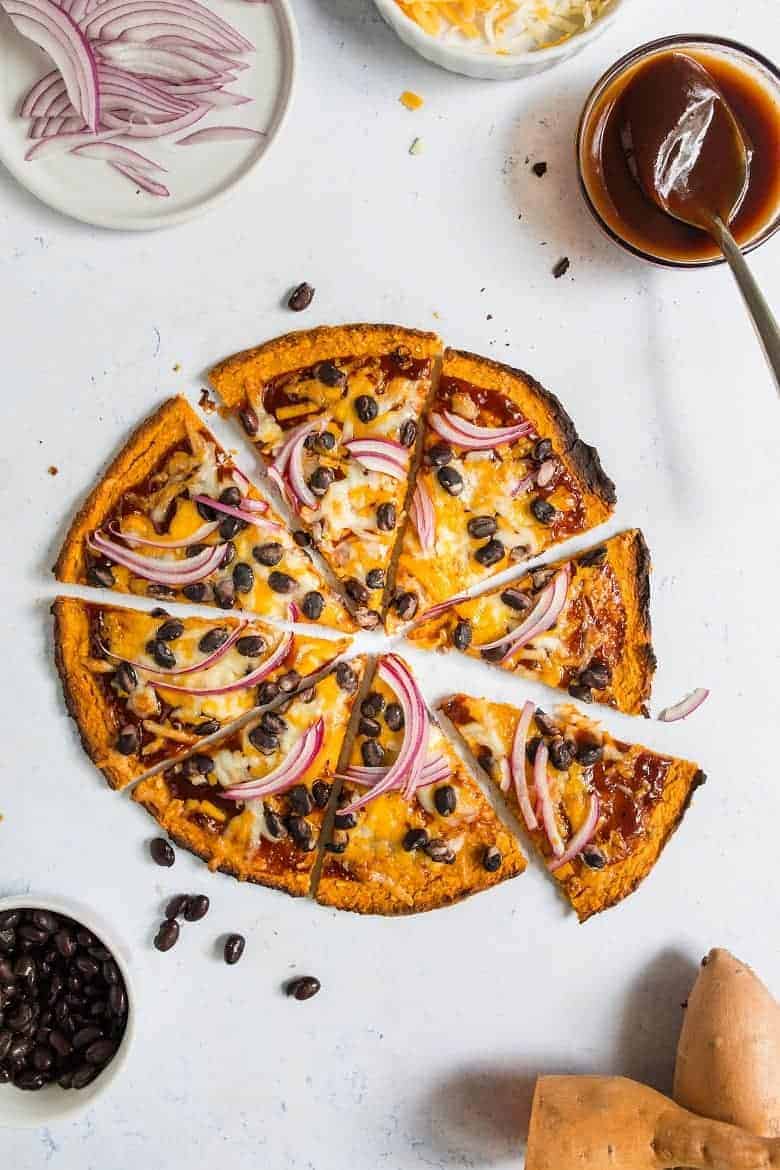
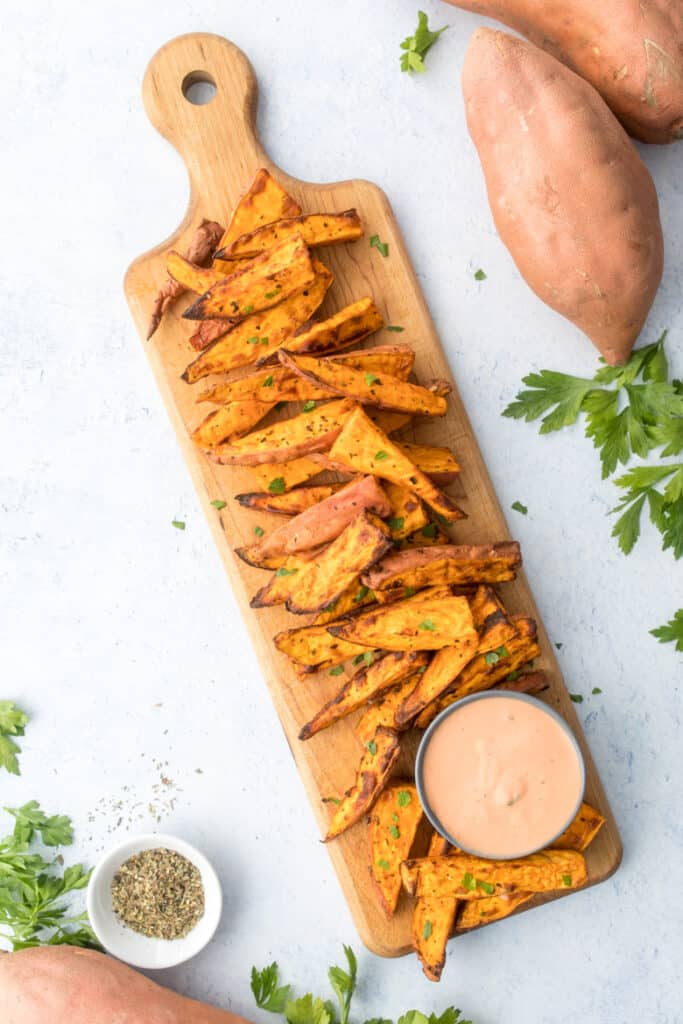

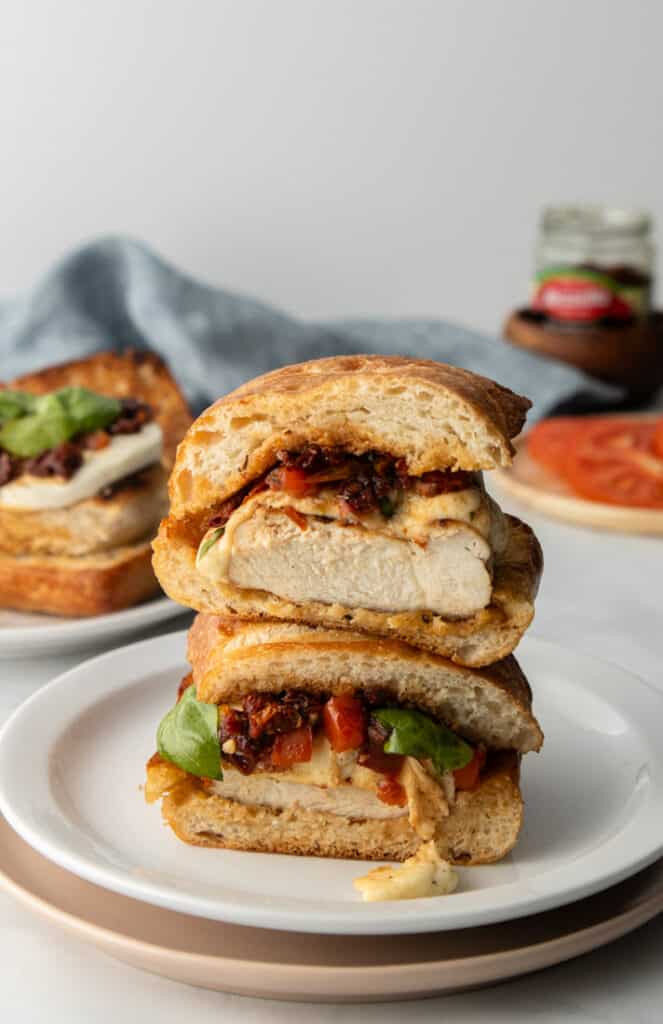
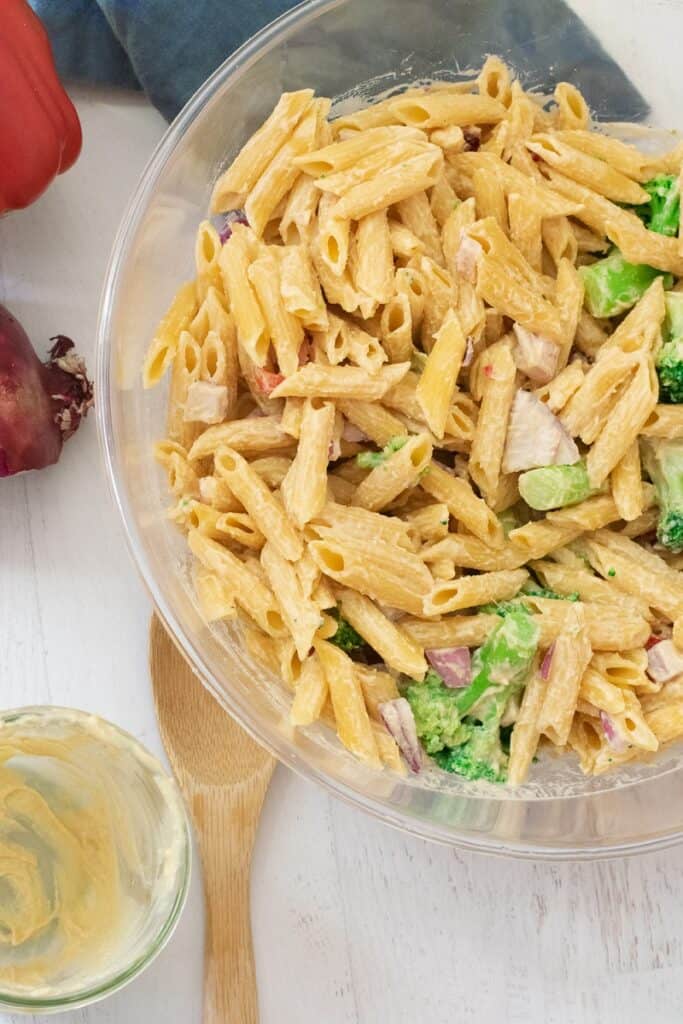
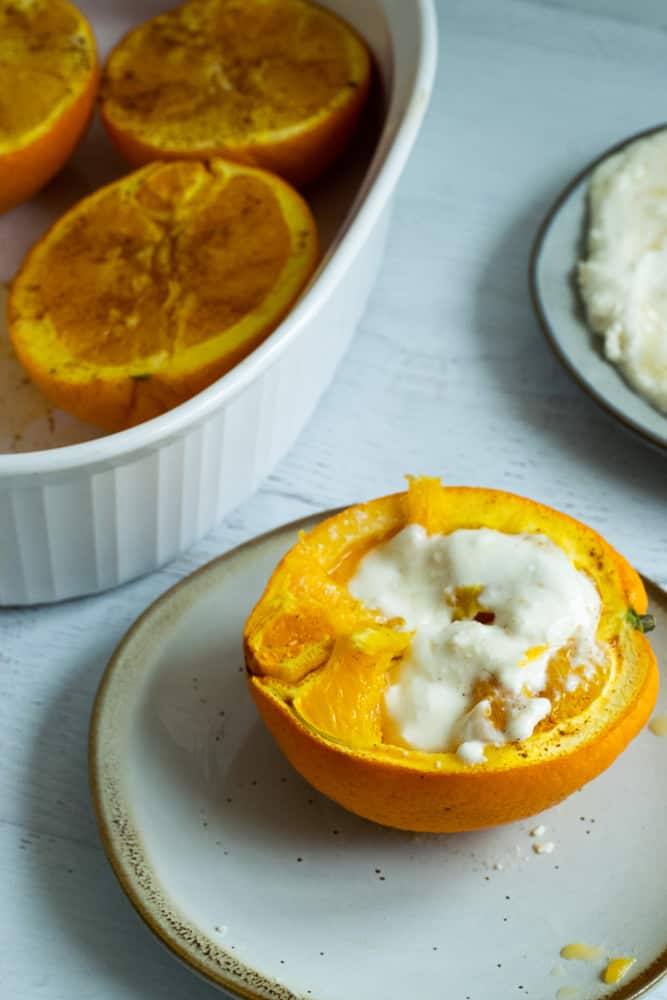
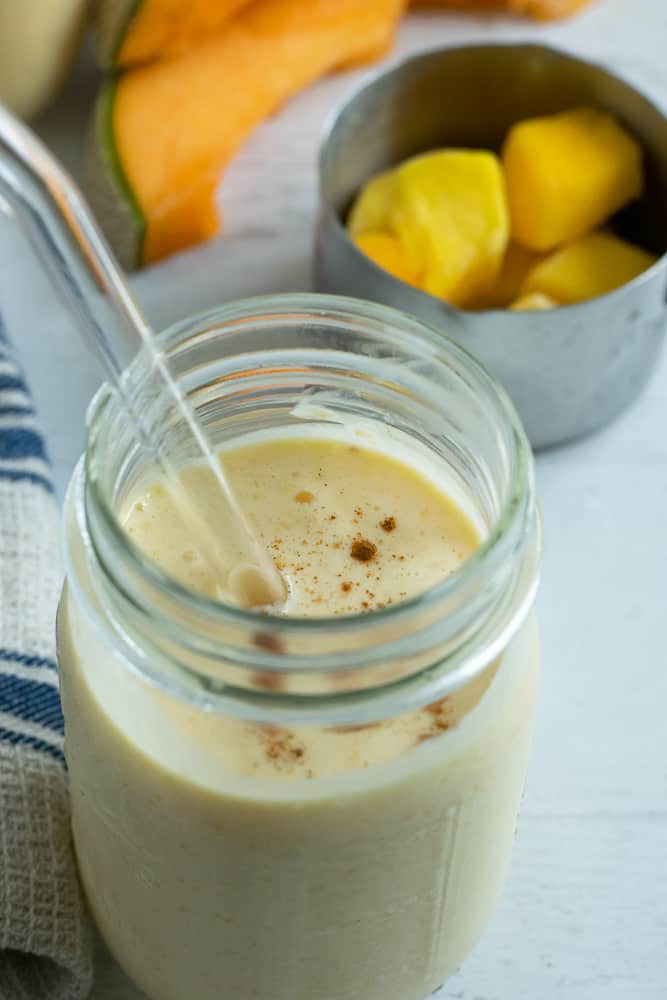
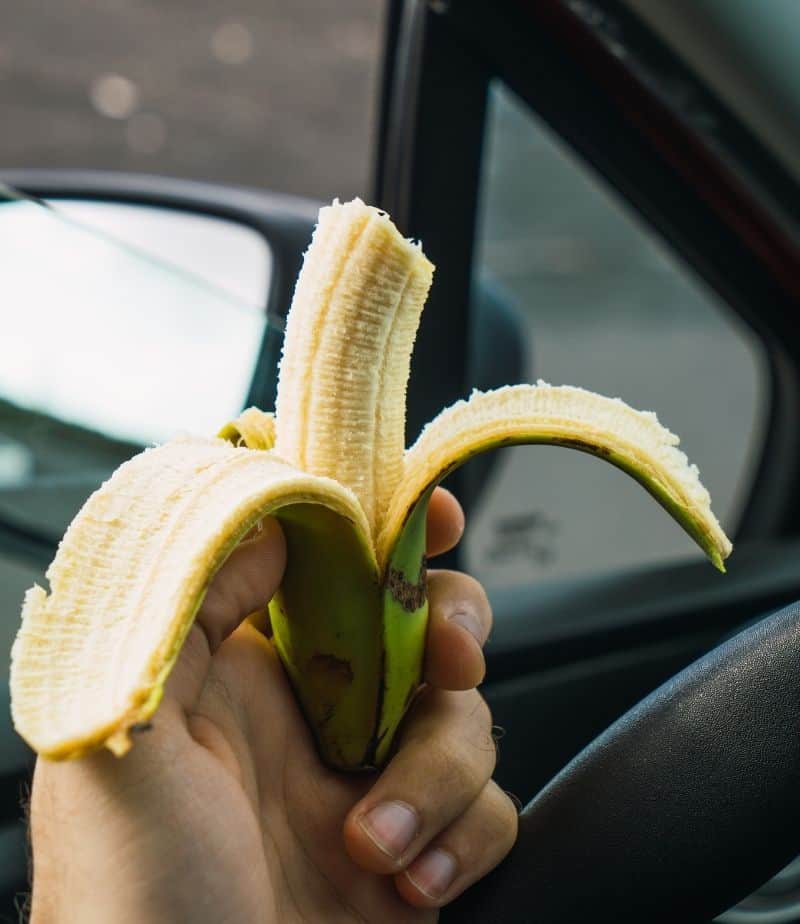
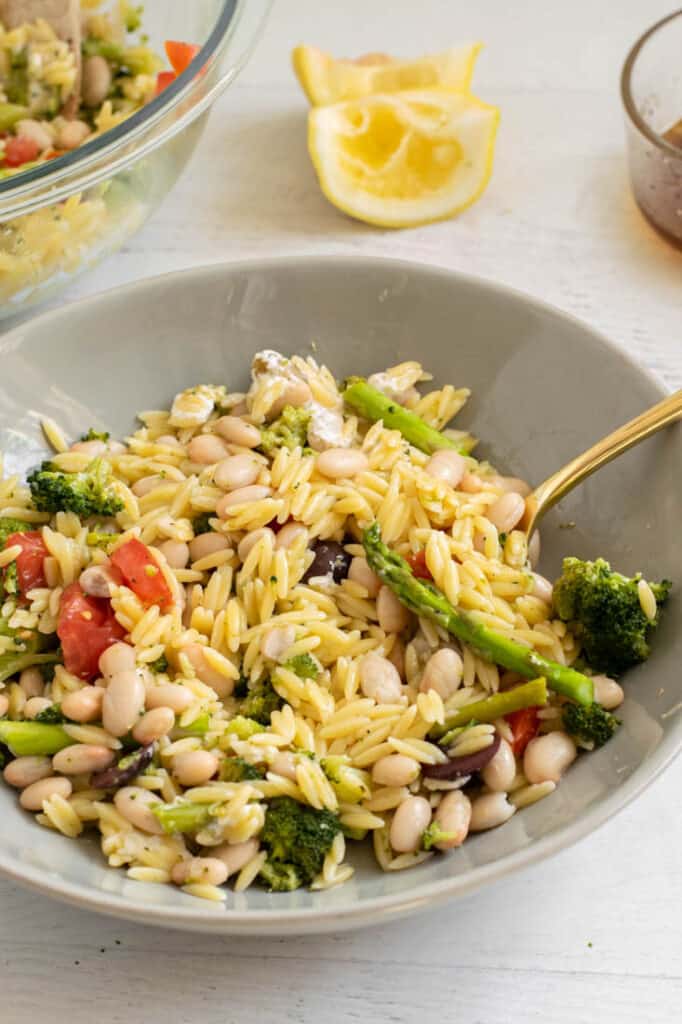
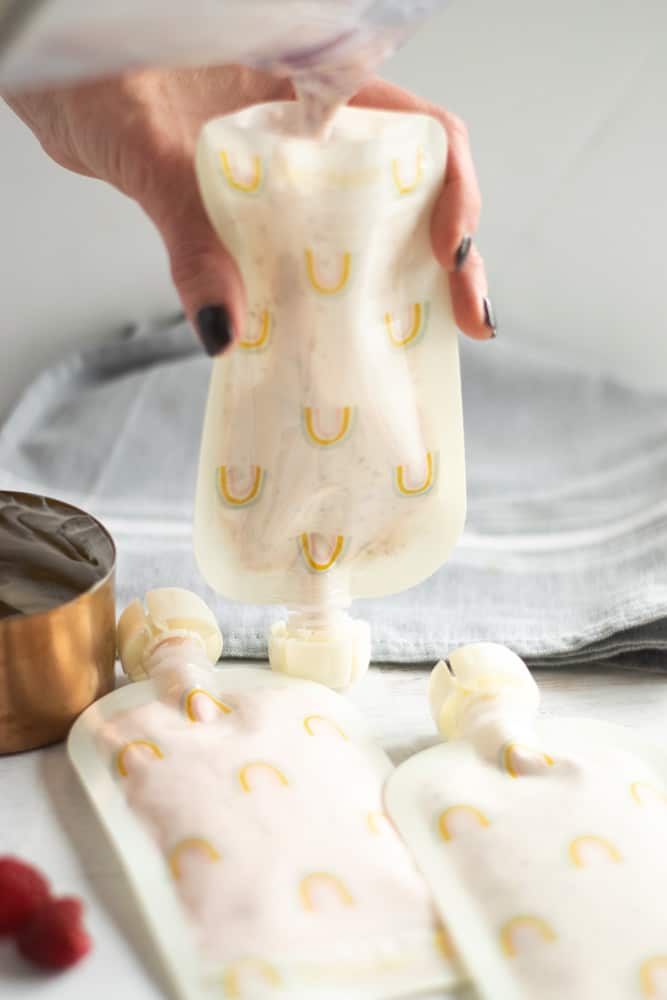
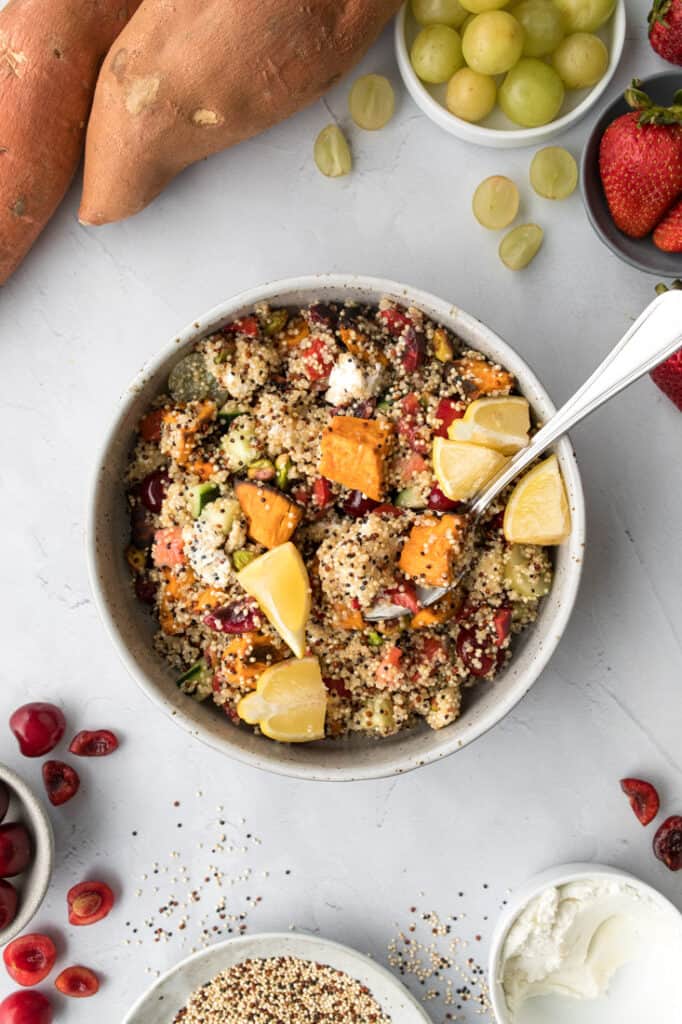


Like This Content?
Support Bucket List TummyThat’s really interesting the study where people were told if the pudding was high and low in calories and how much each group ate. It does make sense with traditional “food rules” that people have though